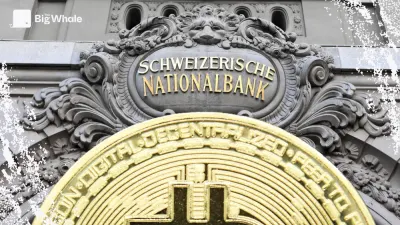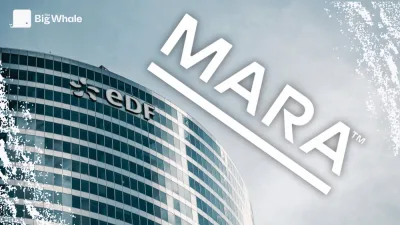TBW - Based Rollups: the key to solving blockchain fragmentation

The year 2024 marks a decisive turning point in the evolution of blockchain infrastructures, with rollups emerging as the preferred solution for solving the scalability challenges of Ethereum and, increasingly, Bitcoin. This innovative technology represents a major strategic advance, enabling the performance of blockchains to be optimised without compromising their fundamental architecture.
In their technical design, rollups function as satellite chains of Ethereum, linked by cryptographically secure bridges. The mechanism relies on a sequencer - which can be centralised or decentralised - responsible for compressing and publishing transactions on the main chain. The architecture offers a major advantage in terms of security: it guarantees total protection against potential malicious use of the sequencer, whether this involves misappropriation of funds or blocking of transactions. This robustness extends to the ability for users to recover their assets on Ethereum, even in the event of a complete system failure.
The challenges of a multichain world
In-depth analysis of the blockchain landscape reveals a major challenge: the increasing fragmentation of activity and liquidity between the different layers of the network. This is a direct result of the current architecture, where layers 2 and Ethereum operate independently, making real-time synchronisation impossible.
This fragmentation raises a crucial technical issue: the impossibility of executing atomic transactions between different chains. Where a single blockchain guarantees the complete execution or total reversal of a series of transactions, the current multi-chain ecosystem cannot offer this fundamental guarantee.
Faced with this challenge, the industry has seen the emergence of various coordination solutions, notably "shared sequencers". However, these initiatives face two major obstacles:
- The inherent vulnerability of adding a new layer of infrastructure
- The unlikely consensus between the various ecosystems (Superchain, Arbitrum Orbit, Elastic Chain, AggLayer) on a common solution
In this context, Ethereum emerges as a natural and elegant solution. As a shared sequencer, the core network offers not only native coordination between the different layers, but also valuable neutrality and proven reliability. This approach, dubbed "based sequencing", promises to transform today's fragmented architecture into a unified and coherent ecosystem.
Based Rollups represent the technical embodiment of this vision. By delegating their sequencing to Ethereum, these solutions naturally inherit its censorship-resistant properties and operational robustness, while maintaining synchronous communication with the core network.
It is important to note that this innovation is compatible with the two main existing rollup approaches - zk/validity and optimistic - thus offering valuable implementation flexibility.
The impact of this evolution extends beyond the technical aspects. As Matthew Edelen, founder of Spire Labs, points out in an exclusive interview with The Big Whale: "For developers, it's a real headache. Imagine having to update an application or a token on several channels: you have to manage bridges, coordinate messages... The ideal would be to have an experience where everything happens as if on a single channel. And that's exactly what Based Rollups promise."
>> Layers 2 Ethereum: state of play and challenges
Challenges of Based Rollups
An analysis of the technical challenges reveals a notable difference between traditional approaches and Based Rollups. Traditional sequencers offer almost instantaneous confirmations - Arbitrum, for example, processes transactions every 250 milliseconds. By contrast, Based Rollups, synchronised with Ethereum, have to contend with a 15-second delay, potentially impacting the user experience.
However, a major innovation is on the horizon: the integration of pre-confirmations on Ethereum. This technical advance will ensure that transactions are included in the next block, building on the existing staking system. The mechanism, comparable to the success of MEV-Boost, which already has 90% of validators on board, will enable operators to increase their revenues via a simple but effective "side-car" system.
The most promising aspect of this development lies in its immediate deployment, requiring no changes to the main protocol. Initial tests are already conclusive, with potential performance reaching a latency of 100 ms - a significant advance for the ecosystem.
The question of value capture is the second strategic issue. Faced with the risk of Ethereum validators monopolising SRM, an innovative solution is emerging: an auction system for "execution tickets". This approach enables rollups to maintain their profitability while preserving the integrity of the system.
The final piece of the jigsaw concerns real-time validation. While zero-knowledge technology is currently showing its limitations in terms of speed, the use of secure execution environments (TEEs) is emerging as a pragmatic and promising alternative for the future of Based Rollups.
Projects at the heart of the narrative
In the emerging landscape of Based Rollups, several key players stand out, each bringing their unique vision to this promising technology. Leading the way is industry pioneer Taiko, which is facing the technical challenges we mentioned earlier but still manage to build an ecosystem.
Gwyneth is a another based rollup built by Taiko Labs, but it is including solutions for all problems that Taiko is facing.
Spire Labs is building a based development kit specifically targeting appchains, with a clear value proposition: transactional cost optimisation, infrastructure customisation and value capture, all while maintaining seamless interoperability with the Ethereum ecosystem.
On the technical innovation front, Risechain stands out for its bold ambition: to develop a general-purpose layer 2 capable of processing up to 1 Gigabyte per second, a performance that could redefine industry standards.
The diversity of approaches is also evident in the business models adopted. While Rogue opts for an innovative community model, distributing all its tokens to "miners" who generate its validity proofs, Nethermind, with its Surge project, makes the strategic choice to launch without a token at all. Meanwhile, Puffer is extending its liquid restaking expertise towards the development of a Based Rollup solution, illustrating the growing convergence between different blockchain innovations.
Conclusion
The analysis reveals that Based Rollups represent a major innovation for the Ethereum ecosystem. By unifying activity and liquidity between the main chain and its layers 2, this technology offers a promising alternative to traditional fragmented architectures. Rather than multiplying isolated chains, it capitalises on Ethereum's existing liquidity while amplifying its network effect.
The explicit support of the Ethereum Foundation, notably through the voice of Justin Drake, lends further legitimacy to this approach. Based Rollups are emerging as a particularly elegant horizontal scaling solution, capable of preventing fragmentation of the ecosystem while fostering a healthy competitive dynamic between the various players.
The outlook for 2025 looks particularly promising. Adoption could accelerate significantly, particularly if established rollups begin to migrate to this new paradigm. This transition would be facilitated by forthcoming developments to the Ethereum protocol, in particular the introduction of APS (attestor-proposer separation) and SSF (one-slot finality). These technical updates should considerably optimise the performance of Based Rollups, both in terms of pre-confirmations and transaction finalisation.



